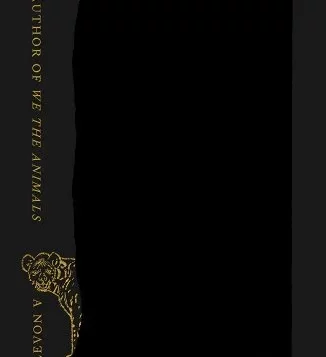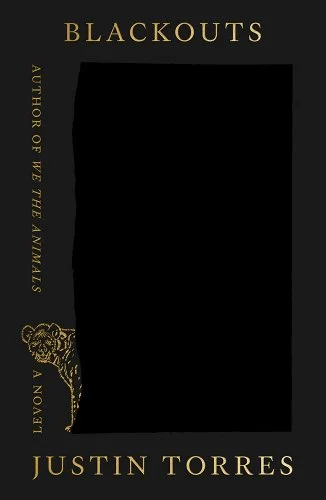BLACKOUTS is an unusual novel, blending fact with fiction, a loose sequel to author Justin Torres’ debut novel We the Animals. The narrator, a young man of Puerto Rican descent who spent time in a mental ward as a teenager, travels to a mysterious building known as the Palace out in the desert. There, he meets up with Juan Gay, a much older man whom he knew on the ward. In Juan’s room, the narrator finds a book documenting the lives of early 20th-century lesbians, but with much of the text redacted. Through conversation and exchanging stories, the narrator comes to understand Juan’s connection to this material.
In “A Sort of Postface” at the book’s end, Torres reveals that all of the characters in this novel are real people, though “they have become fictional characters.” Two of the most engaging are Jan Gay, the uncredited author of the book that the narrator discovers, which is called Sex Variants: A Study in Homosexual Patterns, and her partner, Zhenya. At least by the way Juan tells their stories, they could make great subjects for biographies or novels. Jan was the daughter of the so-called “Doctor to the Hobos,” who abandoned his family to wander the country and work for progressive causes, and who had a relationship with anarchist Emma Goldman. A nudist, Jan wrote a book about the naturist movement and turned it into a documentary. One of her later lovers was Franziska Boas, daughter of the famous anthropologist Franz Boas. She shared an apartment with a young Andy Warhol (then still going by Warhola).
One of the most dramatic sections of the book is Juan’s recounting of Jan’s struggle to publish her research on the topic of lesbianism. Despite having studied under German sexologist Magnus Hirschfield, she needed an accredited doctor to publish her results. She found one who would supposedly work with her, giving him her notes. He formed a committee to conduct further interviews with lesbians and then buried Jan’s name in their published book, refusing to return her notes. Juan tells this story as a movie, using the recurring image of doors opening for each scene.
Zhenya was an illustrator who apparently used Juan as a child model for her children’s books. Juan recounts the plot of one, Who’s Afraid?, about a little boy encountering wild animals, while resetting the story in a gay bar.
Stories, told in different ways, make up most of this novel. The narrator talks about his father, who worked undercover for the state police, wearing chains and crosses while in character, which leads the narrator to pursue men who have these attributes later in life. He recounts the early, tumultuous years of his parents’ marriage, the arguments and beatings and the police being called. As if in a movie, he tells of his relationship with an older man, talking in a bar about the small town he grew up in and the women there, single mothers who cared for him even though they knew he was odd, and the teen girls whom he tried to love but could not.
The novel is filled with photos, illustrations, and copies, many of them from Jan’s book, showing the pages heavily blacked out. “Blinkered Endnotes” helpfully explain the source of each image. These give a further sense of the reality of these characters. The title comes from the censored pages of Jan’s book, as well as the narrator’s seizure-like moments, where he loses both time and memory. Juan and the narrator have a tender relationship with lots of playful teasing back and forth. Juan shares his wisdom and experiences, with lots of amusing literary, cinematic, and queer references. Despite the novel’s strangeness, it offers a surprisingly coherent reading experience, with all of its elements making a kind of sense within its world.
________________________________________________________________
Charles Green is a writer based in Annapolis, Maryland.







